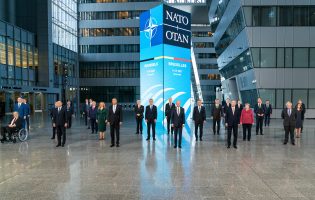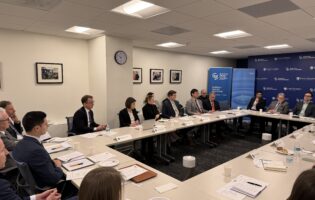International Space Exploration in East and West Germany
On August 25, 2016, DAAD/AGI Research Fellow Colleen Anderson presented her research on international space exploration in East and West Germany in a seminar at AGI. She explored the historical background of German rocketry programs, examined German imaginations of space exploration in the early postwar period, and described the nature of East and West German involvement in space exploration programs. Germany’s space programs were exceptional in that German scientists in the east and west saw space exploration as an opportunity for international collaboration, rather than competition.
German rocketry was essentially nonexistent after World War II. While Germany’s V-2 rocket was the first to go into outer space, it was also the source of major destruction in Europe. At the war’s end, the Allies banned rocketry in Germany for the few rocket scientists who had not left the country by the end of the war.
Despite the ban and lack of scientists, space exploration still existed in the imaginations of East and West Germans, reflected in popular culture. Television programs in both the German Democratic Republic and the Federal Republic of Germany featured international space crews who put aside national interests to work toward the common goal of saving the planet. As the rocketry ban was lifted, Germans began to make their imaginings a reality.
In the 1960s, East Germans collaborated with the USSR and other Eastern bloc countries through the Interkosmos space program. In Interkosmos, Germans especially made contributions in space optics, producing the MKF-6 camera in 1976. The development of the MKF-6 meant that not only did East Germany develop important science for the international space community, it also began collaboration with other states who wanted use of the camera for geographic imaging. One of the most notable and perhaps surprising examples of this was their partnership with the Philippines.
After the end of the rocketry ban, the Federal Republic of Germany developed their space program through three organizations: the National Space Agencies, cooperation with NASA, and most importantly, the European Space Agencies (ESA). The priority that West Germany placed on the ESA above its national space programs spoke to the priority of cooperation in space technologies; at the time, only France contributed more money to the ESA, and Germany contributed more money to the ESA than to its own national space funding.
The most important collaborative project of the ESA was Spacelab, which aimed to put a laboratory on the end of a space shuttle and was meant to set the tone for collaboration between NASA and the ESA. While the program had its weaknesses (a hierarchy that put NASA at the top and therefore disliked by Europeans, squabbles about priorities within the ESA, disagreements about what projects to put on the spacelab once it was launched), Spacelab was ultimately a success for international cooperation and the most successful ESA program.
In the Cold War period, East and West German space programs developed different technologies and worked with different groups, but both had similar motivations to promote peace, alliances, and German science. East German scientists were not isolated, providing actors across the globe with new imaging technology, and West Germans were able to unite groups of countries amongst squabbles.
Contact Ms. Elizabeth Caruth, Program Coordinator, at ecaruth@aicgs.org with any questions.
Location
AICGS R. G. Livingston Conference Room
1755 Massachusetts Avenue NW Suite 700 Washington, DC 20036 United States







